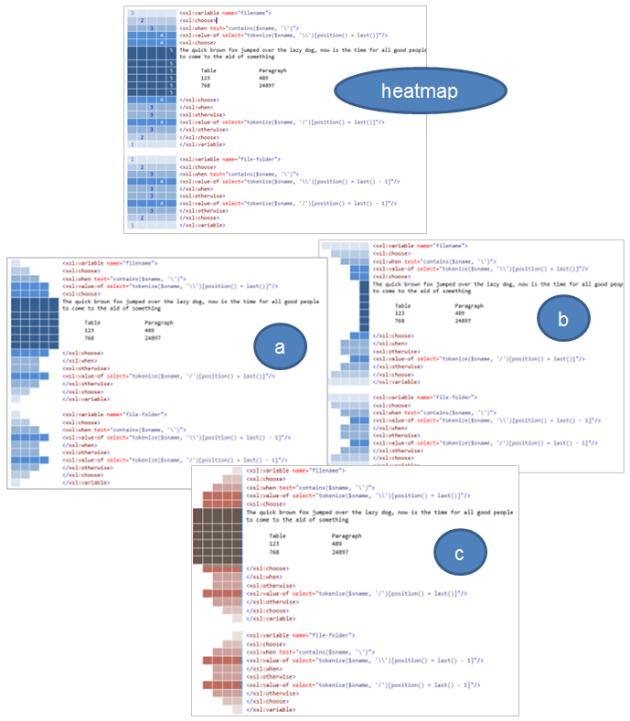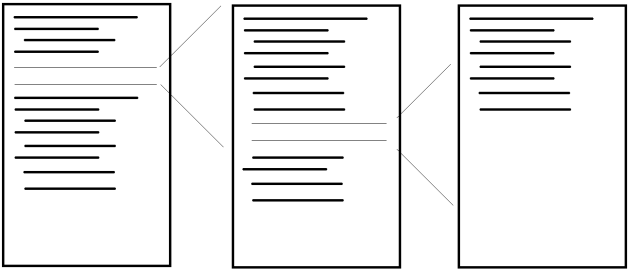New Coding Paradigms
February 16, 2016 1 Comment
So I’ve recently been thinking that the whole idea of editing text files filled with code is outmoded. When I’m thinking about code, I certainly don’t think of it as a set of classes and functions laid out in a particular order. I think of it as a cloud of entities with properties and interactions flowing between them. Shouldn’t our experience of writing code reflect this?
We need to start rethinking our code-editing tools. A lot. Here is a simple example:

What else could we do? How about the ability to arbitrarily break off chunks of code and view them in parallel, even nesting this behavior to break long blocks of code into a string of chunks:

What if we let the flow of the documentation decide how a reader is introduced to the code base, instead of letting the flow of compiler-friendly source files decide it? Chunks of code are embedded within wiki-style documentation, and while you can follow the code back to its source, reading the documentation will eventually introduce you to the whole codebase in a human-friendly fashion.
The same code could even appear in multiple places (obviously updated when the source changes), and you could see all the places in the documentation where a particular chunk of code appears. This could bridge the gap between documentation and code; documentation will never grow stale, as updating code necessitates interaction with it. Similarly, updating documentation is the same process as writing code. When a standard changes or an SLA (service level agreement) is modified, the code changes too.
But why restrict ourselves to semi-linear, text-based documentation a la wikis? We tend to find UML diagrams extremely helpful for visualizing complex systems in code. What if we could build powerful, adaptable tools to translate between raw code, text-based documentation, and visual diagrams? Strictly binding them together might restrict you in the lowest levels of coding (much like, for example, using a high-level language restricts your ability to control memory allocation), but it opens up the new ability to make changes to a diagram and have most of the code rearrange and resolve itself before you. Then you step in to give a guiding hand, and adjust the text documentation, and voila! Best of all, this is more than a diagram-to-code tool; the diagram is a living thing. In fact, the diagrams, the documentation, and the codebase are synonymous. A change in one is a change in the others.
We’re getting to the point where it is much more useful to be able to dance across a codebase quickly than to be able to tweak and tune the minutiae of your code. Some allowances must be made for processing-intensive applications. Perhaps this system wouldn’t even be useful in those cases. But when you find yourself favoring adaptability and iteration speed over efficiency during development, and when you find yourself being hampered by the need to go between files, scroll through large swathes of code, or referring back and forth between code and documentation, maybe it’s time to rethink your coding paradigms.
I’ve seen a lot of discussion about this over the years. To some extent, this seems inevitable. But there is the concern that 1) people will forget/ignore how things actually work and 2) not knowing the inner workings can introduce some gnarly vulnerabilities.
LikeLike